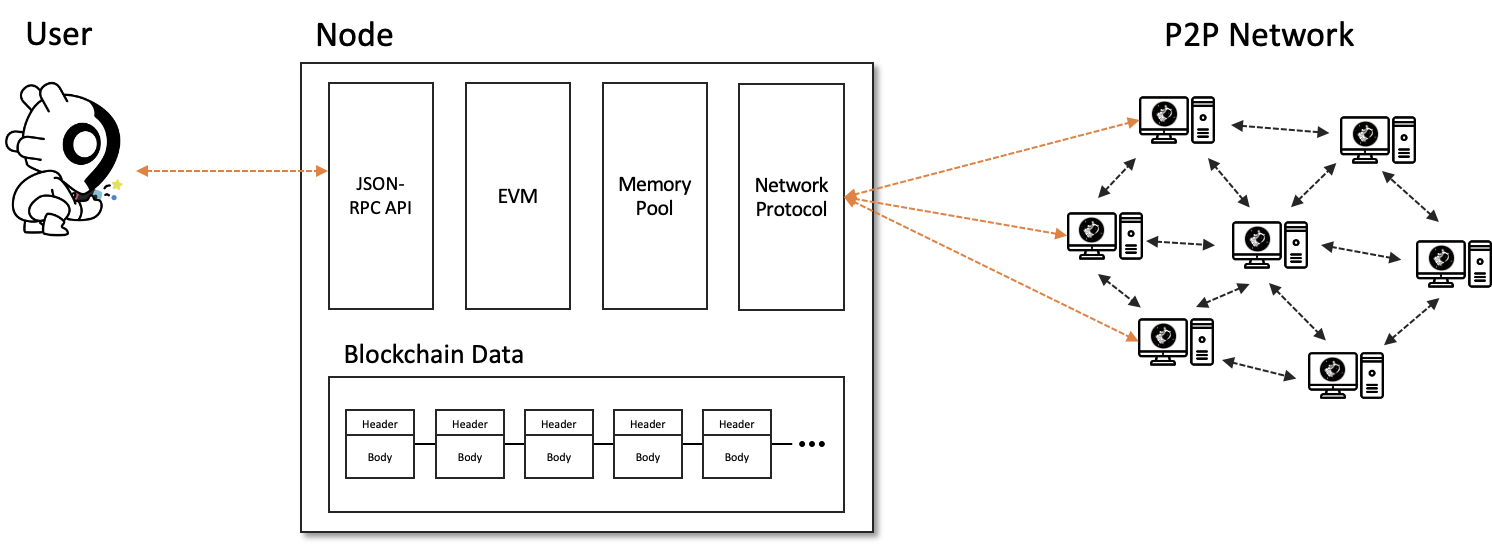Demystifying Cryptocurrency Nodes: Deep Dive into Polygon Node Ecosystem

In 2023, the landscape of blockchain technology has evolved, shedding its former niche status and emerging as a real transformative force. As the technology continues to flourish, developers are increasingly embracing the concept of placing trust in code and cryptography, harnessing this trust to create decentralized applications, or dApps, that utilize the latest blockchain technology.
This article aims to illuminate a critical yet often overlooked aspect of dApp development: cryptocurrency nodes. We will delve into what they are and how they can be optimally leveraged, with a specific focus on one innovative blockchain solution that has garnered favor among developers: Polygon nodes.
Key takeaways
- Every decentralized network consists of cryptocurrency nodes, which are mere computational devices compliant with specific requirements;
- Such devices securing various protocols count up to thousands and all work together with a common goal to finalize credible transactions and securely store the history of previous operations;
- Polygon nodes, similarly, safeguard the eponymous protocol while also allowing developers to use them as access channels to building products on top of the chain;
- Various node services dedicate themselves to maintaining servers connected to scores of crypto protocols so that software engineers can onboard to the Web3 realm with ease.
Unveiling the significance of nodes
Nodes are computational devices equipped with specialized software that enables them to store and record data on the blockchain and retrieve this information upon request. Two primary types of them are:
Full nodes are meticulously synchronized with the blockchain network, maintaining a comprehensive history of the network. This synchronization ensures the network’s stability and guards against data loss or manipulation. This historical record is readily accessible to users worldwide.
Light versions stand in contrast to their full-node counterparts, offering a more streamlined and resource-efficient approach. These do not burden themselves with the exhaustive storage and synchronization requirements. Instead, these devices are designed to adopt a selective strategy, downloading and verifying specific components of the blockchain, such as transaction headers and account balances, while they may make certain trade-offs in terms of security and decentralization.
In essence, blockchain systems rely on cryptocurrency nodes for their operation. Decentralized applications serve as the gateway to the Web3 space, where access to the actual blockchain, data retrieval, and user requests are vital for their proper functioning and ultimate purpose.

Not too long ago, setting up a full node to connect directly to the blockchain was the sole means of establishing a presence in the Web3 era. We will explore how GetBlock is revolutionizing node usage and changing the narrative.
Unpacking Polygon nodes
Formerly known as the Matic Network, Polygon is a comprehensive platform tailored for the creation of Ethereum-compatible chains, with a particular emphasis on expediting the launch of high-quality dApps. Positioned as a sidechain to Ethereum, Polygon offers faster and more cost-effective transaction processing within its network compared to the main ETH network, all while maintaining the security standards of Ethereum.
GetBlock serves as an invaluable resource for both novice and experienced developers, simplifying access to Polygon nodes. By creating a free account on the platform, users can explore shared or dedicated infrastructure.
With GetBlock, you have the flexibility to opt for shared infrastructure, perfect for startups on a tighter budget, or to secure a personalized dedicated Polygon node to fully harness the technology’s potential and create a robust project.
Shared cryptocurrency nodes are an excellent starting point for experimenting with Web3 and DeFi applications at a testnet level. Share the Polygon node infrastructure with other users, benefit from 40,000 free requests, and fine-tune your dApp before making it official on the mainnet.
Dedicated servers, on the other hand, take infrastructure management to the next level. Enjoy unlimited requests, select from a variety of API methods, and specify the location of servers. With dedicated Polygon nodes, customization becomes the norm, while the GetBlock team ensures stable performance for your dApps. A qualified 24/7 support team stands ready to address any inquiries.
Streamlining Web3 onboarding with GetBlock
Embarking on your Web3 journey can be a resource-intensive and time-consuming endeavor, often diverting focus from critical aspects of dApp development. GetBlock offers a solution to this challenge, allowing you to experiment with Polygon nodes and execute multiple actions on the blockchain without the need for complex scripting or coding. Alternatively, you can connect to a range of available cryptocurrency nodes and redirect your resources towards crafting a superior product while GetBlock handles the infrastructure for you.
Author Profile

Jerred Wilkinson
Info
18 Views 0 CommentsComments
Table of Contents
Recent
-
Bitcoin Fundamental Briefing, April 2024 Bitcoin Fundamental Briefing, March 2024 Strategies for Trading Forex on a Budget Bitcoin Fundamental Briefing, February 2024 Bitcoin Fundamental Briefing, January 2024 Strategic Asset Allocation Techniques for Currency Traders Bitcoin Fundamental Briefing, December 2023 Bitcoin Fundamental Briefing, November 2023